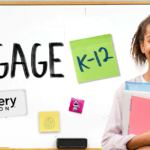Originally published in the March/April 2020 issue of AC&E/Equity & Access
We make sense of our lives and our world through stories and information.
Children need the opportunity to form a sense of self by reading, evaluating, and discussing a wide variety of books. Yet this opportunity is still a luxury for many children.
School librarians shape the perspectives of young people by curating rich collections that mirror lived experiences, provide windows into other worlds, and invite learners to step through sliding glass diverse characters and to prioritize the voices of those who are members of underrepresented groups. Chicano author and professor David Bowles points out that “there’s an extra degree of nuance and authority that comes with writing from lived experience” (2019).
School librarians are fully committed to developing a “rich reading environment and culture” for learners (AASL 2019).
With appropriate funding, they acquire books to represent multiple perspectives, ethnicities, life situations, and points of view. School librarians elevate the reading experience by immersing learners in opportunities to read and engaging them in evaluating texts for authenticity, perspective, and purpose.
For example, as children examine pairs of books (one that incorporates Rollins’s criteria and one that does not), they evaluate whether illustrations and language are respectful and if the lives depicted are authentic. Their doors, as described by professor Rudine Sims Bishop (1990).
Activists have been calling for more diversity in children’s literature since the 1940s.
In 1941, Charlemae Rollins, an African-American children’s librarian in Chicago, instructed librarians to evaluate books about African Americans for the quality of their illustrations, language, and theme. Illustrations and language should be respectful, realistic, and free of caricatures and degrading stereotypes. Themes should embody a wide range of substantive experiences and promote independence and personal agency (Mabbott 2017).
Since 2014, the #WeNeedDiverseBooks and #OwnVoices movements continue to point out the need for publishers to print the narratives of critical assessment helps develop their reading identity and elevates their insight and understanding.
The American Consortium for Equity in Education, publisher of the "Equity & Access" journal, celebrates and connects the educators, associations, community partners and industry leaders who are working to solve problems and create a more equitable environment for historically underserved pre K-12 students throughout the United States.
- American Consortium for Equity in Educationhttps://ace-ed.org/author/admin/
- American Consortium for Equity in Educationhttps://ace-ed.org/author/admin/April 23, 2025
- American Consortium for Equity in Educationhttps://ace-ed.org/author/admin/
- American Consortium for Equity in Educationhttps://ace-ed.org/author/admin/







